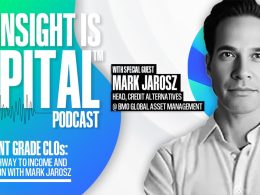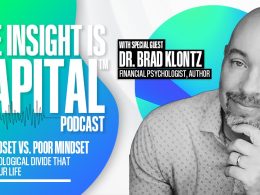Why Jeremy Grantham Thinks We’re Poisoning Ourselves Out of Capitalism – and What Investors Must Do Next
By all rights, GMO Founder and Long Term Investment Strategist, Jeremy Grantham should have already exhausted his supply of existential threats. After all, his decades-spanning investment commentary has tackled climate change, biodiversity loss, and resource scarcity with a conviction few of his peers have dared to emulate. And yet, with unsettling precision, Grantham’s latest Viewpoint1 introduces what he considers the most underrecognized threat of all — toxicity.
“Toxicity is going to be the worst problem facing our efforts to overcome the ill effects of climate change,” Grantham warns. “It could prove to be an existential threat.”
This is not hyperbole. In Rising Toxicity and the Threat to Capitalism and Life Itself, Grantham draws a direct, data-backed line between the proliferation of untested industrial chemicals and the erosion of human fertility, vitality, and ultimately, global capitalism itself. This isn’t just a public health issue. It’s a capital markets issue, a labor force issue, a GDP trajectory issue. And if Grantham is even half right, it’s already well underway.
Endocrine Disruption: A Silent Saboteur
Grantham defines “toxicity” as the accumulated biological impact of over 350,000 man-made chemicals released since World War II — most of which have never been tested for long-term effects. The worst offenders? Endocrine-disrupting chemicals (EDCs) such as PFAS (“forever chemicals”), phthalates, bisphenols, and pesticides — all of which interfere with the body’s hormonal signaling.
“Exposure to endocrine disruptors, especially in early life and above all, in utero, irreversibly affects development of the most sensitive bodily systems – the brain, the reproductive system, the metabolic system, and the immune system.”
Grantham doesn’t mince words: these chemicals are doing to us what leaded gasoline did to generations past — but on a broader, deeper, and more permanent scale.
Falling Sperm Counts, Rising Consequences
The statistics are staggering. Global sperm counts have dropped by more than two-thirds since 1973. Testosterone is following a similar trajectory. Fertility impairment now affects one in six couples.
“It is as if we mean to go out of business,” says Hagai Levine, co-leader of the primary sperm meta-study. “And by ‘we’ he means humans.”
This isn’t just about biology — it’s about social cohesion. A rapidly aging population, dwindling workforce, and sharp decline in libido (across all age groups and countries) paints a bleak picture for productivity, consumer demand, and the future of pension-funded economies.
Grantham again: “If toxicity is not arrested, it could prove to be an existential threat. It will guarantee a continued decline in births.”
The Baby Bust and the Capitalist Trap
For economists still clinging to 10 billion population projections by 2100, Grantham offers a sobering revision: 6 or 7 billion seems more likely. By 2200? Perhaps 2 to 3 billion.
The implications for capitalism are profound.
“What are the likely outcomes for capitalism and society from a rapidly falling global population of babies and young workers, and an equally rapid increase in the population of unproductive and old? In the short and intermediate periods… none of these likely outcomes are good.”
The collapse in birthrates across developed (and even developing) economies is already rewriting the social contract. South Korea’s birthrate, for instance, has plunged to a level where “every eight grandparents will have to share a single grandchild.” That’s not just demographic trivia. It’s an economic death spiral — and no amount of monetary policy can reverse it.
Nature’s Red Flag: Insects, Amphibians, and Collapse
While humans grapple with infertility, the natural world is facing something worse: outright population collapse. Grantham notes that insect biomass is down 50% to 75% over the last half-century, declining by an estimated 2% annually.
“Given insects are not a naturally sexy nor well-funded field… the best one can do is ask senior experts what they believe.”
Their belief? If insect collapse continues, ecosystems will unravel. Amphibians are declining even faster — 3.8% annually in the U.S. alone.
“E.O. Wilson… used to say that nature can thrive without humans, but without insects, the current more-or-less-stable workings of our environmental systems would simply unravel.”
Capitalism’s Dirty Little Secret
Why hasn’t the world acted? Grantham doesn’t hesitate:
“The U.S., with its domination of corporate interests and short-term profit, will not be a leader in reducing toxic chemicals and plastics.”
In this model, corporations profit by outsourcing their costs — to public health, to nature, to future generations. Meanwhile, the U.S. lags embarrassingly behind Europe in chemical bans: 11 banned substances versus 2,500 in the EU.
And it’s not just slow action — it’s willful sabotage. Grantham reminds readers that chemical companies, like the tobacco and fossil fuel industries before them, knew. Internal documents from the 1970s show that corporations understood the long-term damage of their products — and covered it up.
“They knew the damage their products would cause… and still they withheld that data, furiously contested the facts, or worse yet, designed campaigns to confuse the issue.”
Investment Implications: Ditch the Polluters, Back the Builders
So what now?
Grantham offers two distinct calls to action — one urgent and tactical, the other long-term and transformative.
- Sell Chemical Companies
“Chemical companies are likely to be sued even more enthusiastically than oil and gas companies… it’s a no-brainer.”
As with Bayer’s disastrous Monsanto acquisition, the legal liabilities tied to toxic exposure are already hitting balance sheets. Investors would be wise to exit names with exposure to endocrine-disrupting portfolios before the lawsuits snowball.
- Invest in Resilience and Sustainability
The long game is clear: bet on companies with resilience — strong balance sheets, high margins, sustainability DNA — and avoid leverage.
“The ability to withstand climate shocks, economic shocks, and social instability must all increase.”
That means embracing regenerative agriculture, bio-safe materials, and circular economy models. It also means abandoning fantasies of eternal growth. A shrinking population won’t sustain 20th-century capitalism. Instead, Grantham argues for a pivot to qualitative growth — in design, longevity, repairability, and recyclability.
“Managing economies that… have been fine-tuned for growth… against this new no-to-low growth spin will be difficult… outright painful and dangerous.”
Can We Turn This Ship?
Despite the data, the trajectory, and the structural inertia, Grantham remains cautiously hopeful. But not blindly so.
“Success is far from certain… the extreme capitalists may well win, making – and possibly even increasing – profits right up to the cliff’s edge.”
Yet he offers a framework for course correction: detoxify the planet and detoxify capitalism. Internalize all costs. Incentivize families. Celebrate sustainable living. Invest in a world that can support future generations — and has future generations to support.
“We must treat the production of healthy children as a group problem… In this case it takes a society.”
Final Thoughts
Grantham’s warning is not just another ESG talking point. It is a radical redefinition of risk and reward in the age of chemical capitalism. And for institutional investors, the takeaway is as clear as it is uncomfortable:
If we don't stop poisoning ourselves, nothing else we invest in will matter.
Footnote:
1 "Rising Toxicity and the Threat to Capitalism and Life Itself." 1 Apr. 2025, www.gmo.com/americas/research-library/rising-toxicity-and-the-threat-to-capitalism-and-life-itself_viewpoints.















